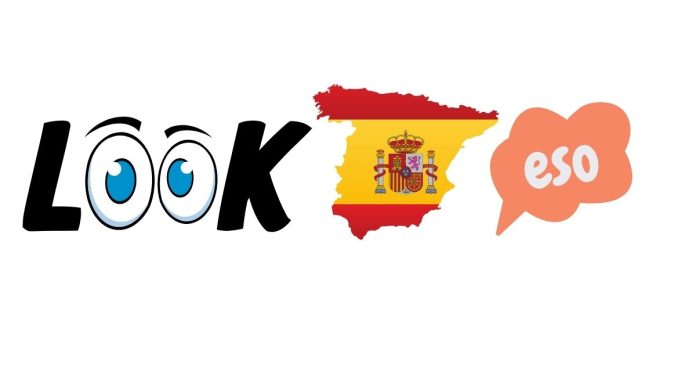If you’re learning Spanish or planning to travel to a Spanish-speaking country, you might come across situations where you want to point something out or get someone’s attention. One common phrase you might need is “look at that.” But how do you say it in Spanish?
In this blog post, we’ll explore the various ways to say “look at that” in Spanish, including different regional variations and expressions that might be useful in different contexts.
“Mira eso”
The most straightforward and widely used translation for “look at that” in Spanish is “Mira eso.”
- Mira: This is the informal command form of the verb “mirar,” which means “to look.”
- Eso: This means “that” (referring to something that is relatively close).
So, when you want to say “look at that,” “Mira eso” is the perfect phrase for casual conversation. You would use it when talking to someone you are familiar with, like a friend or family member.
Example:
- Mira eso, ¡es increíble!
(Look at that, it’s incredible!)
“Mire eso”
If you want to sound a little more formal or respectful, especially when talking to someone you don’t know well, you can use “Mire eso.” This is the formal version of the same phrase.
- Mire: This is the formal command form of the verb “mirar.”
You would use “Mire eso” with someone like a boss, a teacher, or an elder to show politeness or respect.
Example:
- Mire eso, señor.
(Look at that, sir.)
“Mira aquello”
Another variation you can use is “Mira aquello,” where “aquello” means “that” but refers to something that is farther away or less specific.
- Aquello: This word is used when referring to something more distant or something less defined.
If you want to point out something that is farther away, “Mira aquello” is more fitting than “Mira eso.”
Example:
- Mira aquello en el horizonte.
(Look at that over the horizon.)
“Fíjate en eso”
If you want to emphasize that someone should pay attention to something, you might say “Fíjate en eso.”
- Fíjate: This is the informal command form of “fijarse,” which means “to notice” or “to pay attention.”
- En eso: This means “to that.”
This expression is often used when trying to highlight something important or interesting, and it can also have a slightly more focused or intentional tone.
Example:
- ¡Fíjate en eso, está brillando!
(Look at that, it’s shining!)
Regional Variations
Just like in any language, Spanish can vary from country to country, and different regions may have their own colloquial expressions for saying “look at that.” Here are some regional variations:
- “Checa eso” (Used in Mexico and some other Latin American countries)
This phrase comes from the verb “checar,” which is an informal way of saying “to check” or “to look at.”Example: “Checa eso, está buenísimo.” (Look at that, it’s awesome.) - “Mira allá” (Used in some regions)
This is another way to point out something far away, like “mira aquello,” but with a slightly different tone.Example: “Mira allá, ¿ves el barco?” (Look over there, do you see the ship?)
There are several ways to say “look at that” in Spanish, each with its own nuances depending on the context and the level of formality. Whether you use “Mira eso” for casual situations, “Mire eso” for formal ones, or other variations like “Fíjate en eso” or “Checa eso,” you’ll be able to get someone’s attention and direct them to something interesting or important.
As you continue to learn Spanish, you’ll find that understanding these small differences in phrasing will help you communicate more naturally and connect better with native speakers. So next time you want to point out something exciting, try one of these phrases and see how easily you can get someone’s attention!


